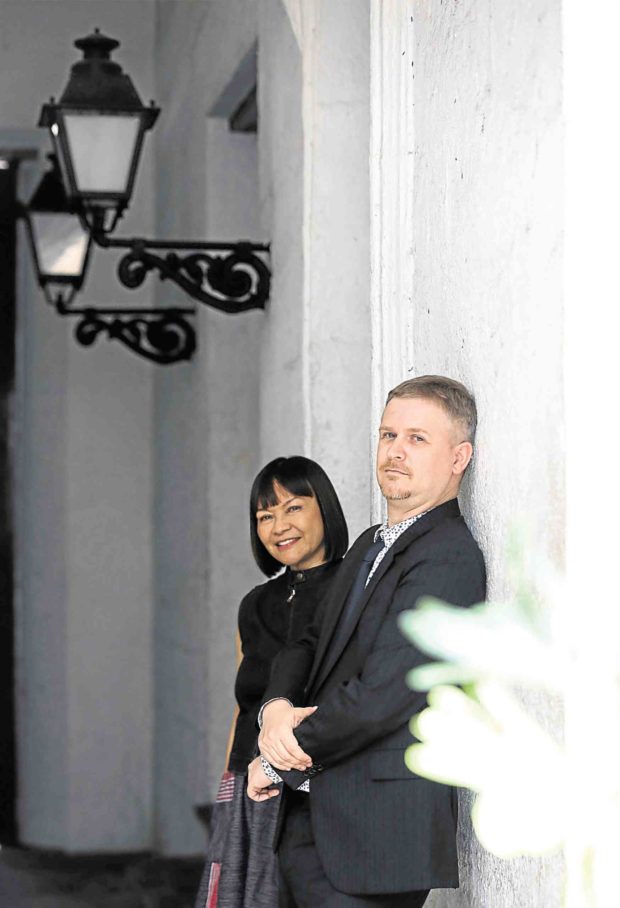
You can’t save every building, but you can modernize the city without destroying it.”
This was the hopeful message of Ian Morley, a professor of urban history, in “History, Heritage and the Urban Fabric,” a talk organized by the Heritage Conservation Society (HCS) on May 17 at Casa Blanca in Intramuros, Manila.
Present at the lecture were members and supporters of HCS, as well as architects, historians and students who are part of an emerging heritage conservation movement in the Philippines.
The movement has been gaining momentum in recent years, in response to the demolition of several historic and architecturally important structures in Manila and in the provinces, usually to give way to shopping malls, condominiums or parking buildings.
Heritage conservation—the preservation of historically important buildings and spaces —doesn’t have to run counter to economic development, says Morley, a British associate professor in the history department of the Chinese University of Hong Kong.
National development
“In many countries, heritage is part of national development,” he says. “It’s part of society in its movement to the modern age. Buildings and spaces are artifacts of civilization. You don’t have to destroy things because they’re old.”
He cited the case of Yangon, Myanmar, where the Yangon Heritage Trust, an NGO initiative to preserve heritage structures in the ancient city, has come up with a comprehensive strategy involving cooperation between the government and the private sector.
With the influx of foreign investment following the relative relaxation of military rule in Myanmar, the Yangon plan hoped to forestall the widespread demolition of heritage that presaged urban development in many Asian cities, including Manila.
History and heritage
The key, Morley says, is to develop a deeper understanding of history and heritage and the difference between the two, and how they relate to what
he calls the urban fabric—modern-city life as we know it.
In particular, the idea of heritage needs to be democratized to make it more meaningful to ordinary Filipinos. In many countries, it is the social and economic elite who decide what is heritage and what is not, to favor their own narrow interests.
In the United Kingdom, Morley points out, the elite favored the preservation of rural landscapes and aristocratic mansions, while allowing the destruction of urban areas to make way for industrial development, in part resulting in the growth of city slums.
“That’s the problem, heritage in this country is an elite idea,” says Morley. “It doesn’t connect to people. That’s the challenge—to make it relevant to people. Sometimes national heritage presents itself as being of everybody, but in fact, it’s not. In a sense, I’m trying to provoke people into thinking about how history can tie into understanding buildings more than just simply being a structure.”
The narrow definition of a heritage structure as primarily one of architectural or aesthetic significance also needs to be reexamined, Morley suggests.
“If you’re not trained in architecture, how do you understand it?” he asks.
Urban history, he says, makes for a more democratic framework for understanding heritage and its meaning for us beyond architectural significance.
“When you promote the stories within buildings, and how that connects to the wider culture, people can start to relate to it,” he explains.
“First, we should never dismiss the idea that the past is everywhere. All around us lie features that are recognizable antecedents. Physical relics, national histories and memories saturate our day-to-day experience as humans. Whether we celebrate the past or not, it’s an unavoidable component of our being as individuals and as members of society.
“Second, the built environment, irrespective of its location and its time of founding, supplies evidence of the people that made it and developed it. Buildings and spaces are artifacts that demonstrate the values that informed their construction and their life in use. A building or a public space, therefore, records the forces working in society where it is found.
“Third, history and heritage play a fundamental role in the formation of our identity as members of a nation.”
Historians, says Morley, tend to be suspicious of heritage as a sanitized, or romanticized distortion of history, suitable for tourists, that fails to include the less palatable aspects of the past. The formulation of heritage can also be informed by nostalgia or snobbery, he adds.
Introduced by HCS chair Liliane Manahan as a “friend of the Heritage Conservation Society,” Morley is familiar with Philippine history, the American colonial period being one of his fields of expertise.
He remarked upon the irony of being financed by Hong Kong to study Philippine history in the US, where the wealth of historical archives on the country’s past is preserved.
“When you don’t understand the past, you don’t know why the present has come to be what it is,” he says. “Through studying urban history, you gain an understanding of the city. And if you know what the city is, you can work within it.
“We have to accept the reality that you cannot save everything—everything that is old cannot be saved, therefore, you have to select what is important to save, and make it important to the people. Heritage has to work for the public good, not just for the ego of the architect who is doing the renovation.”